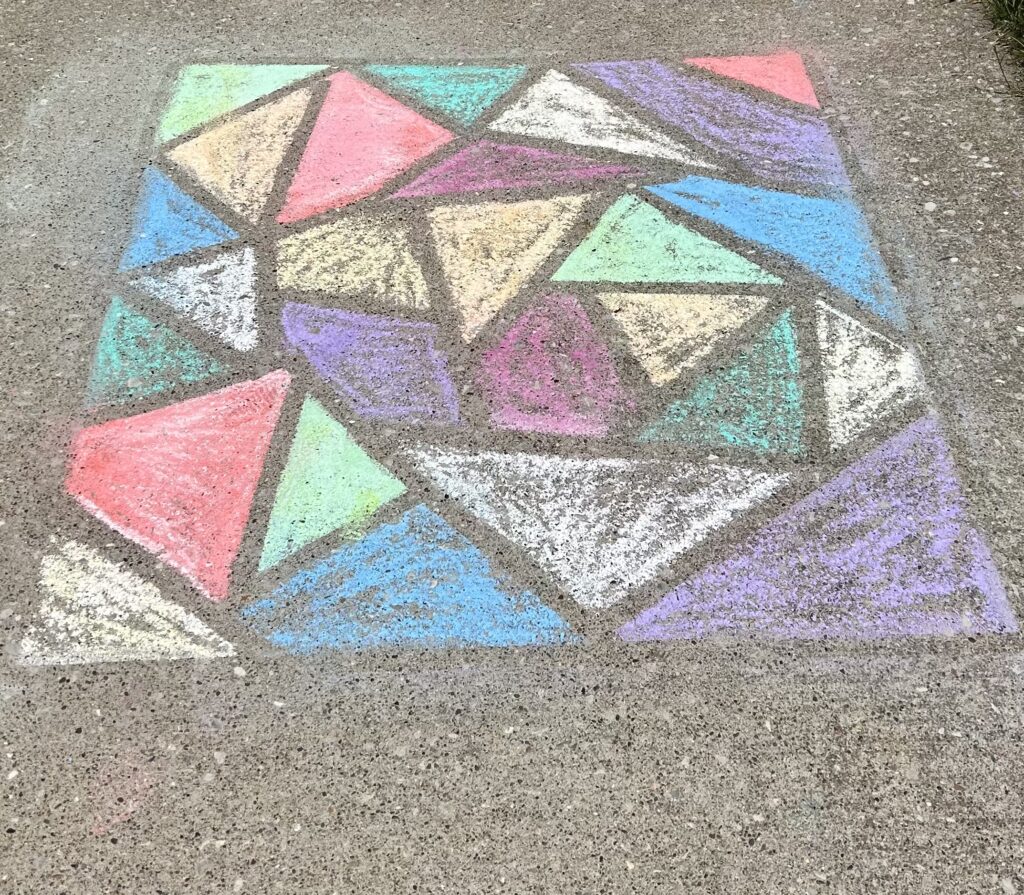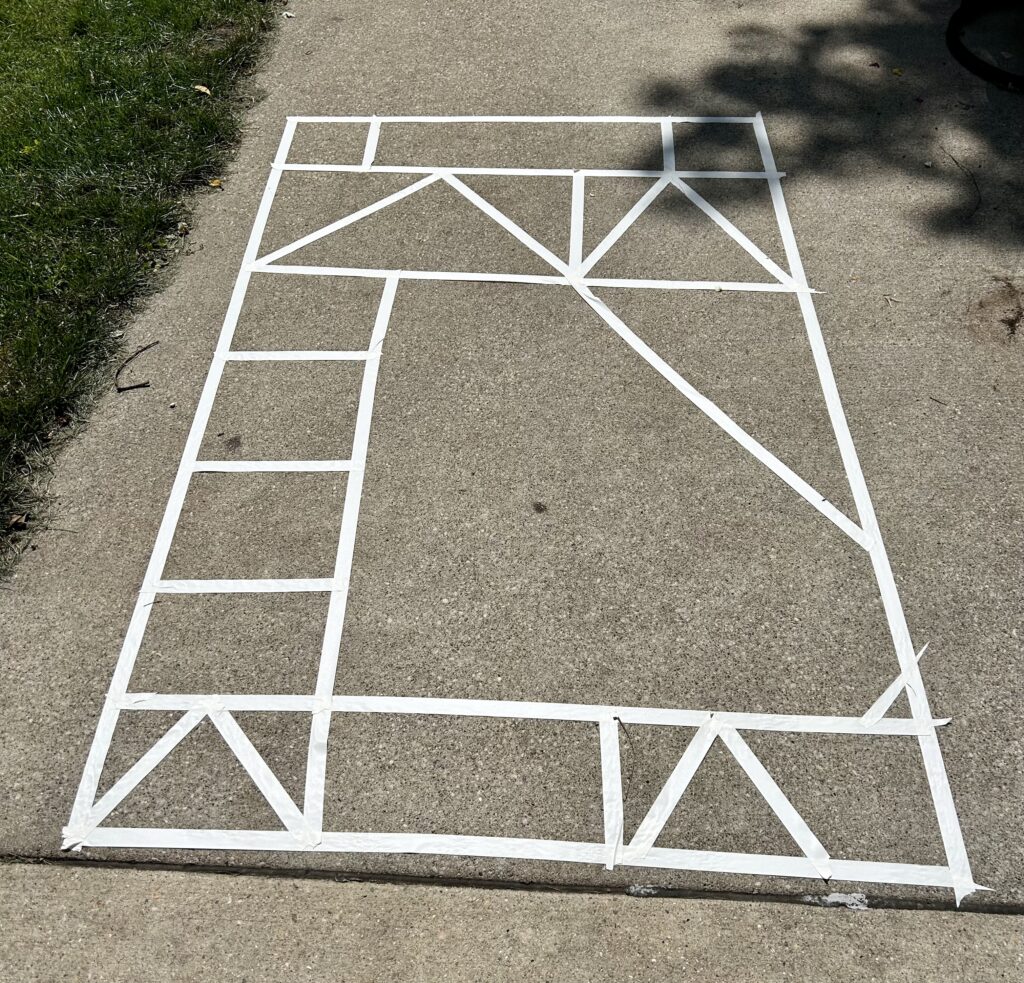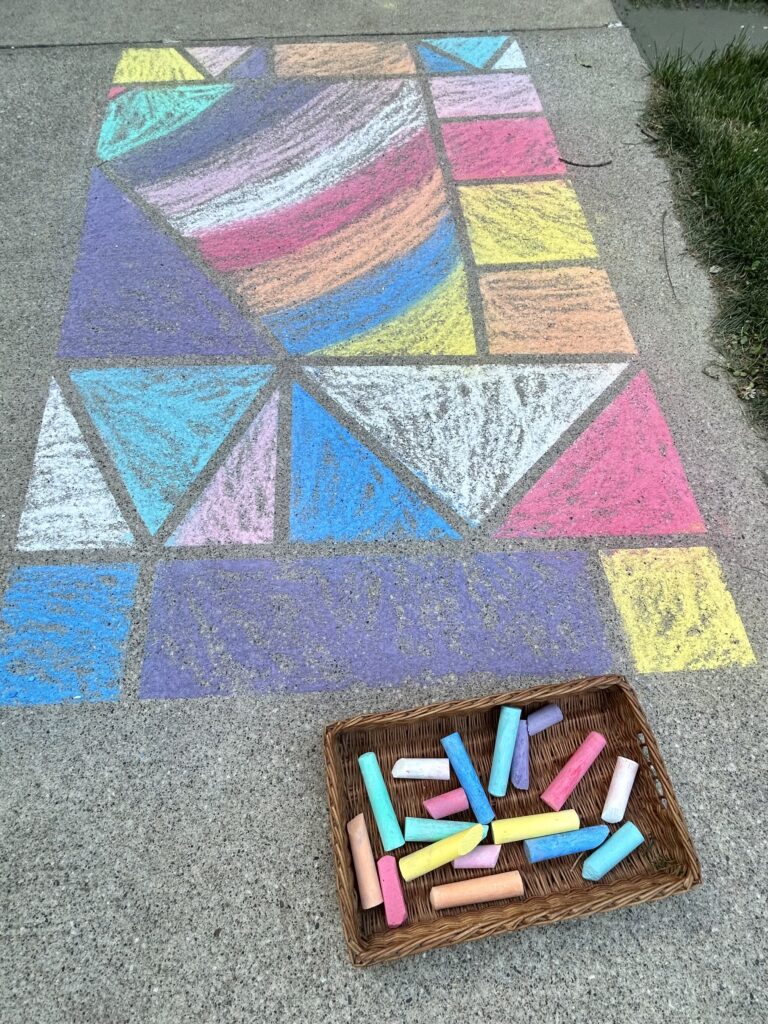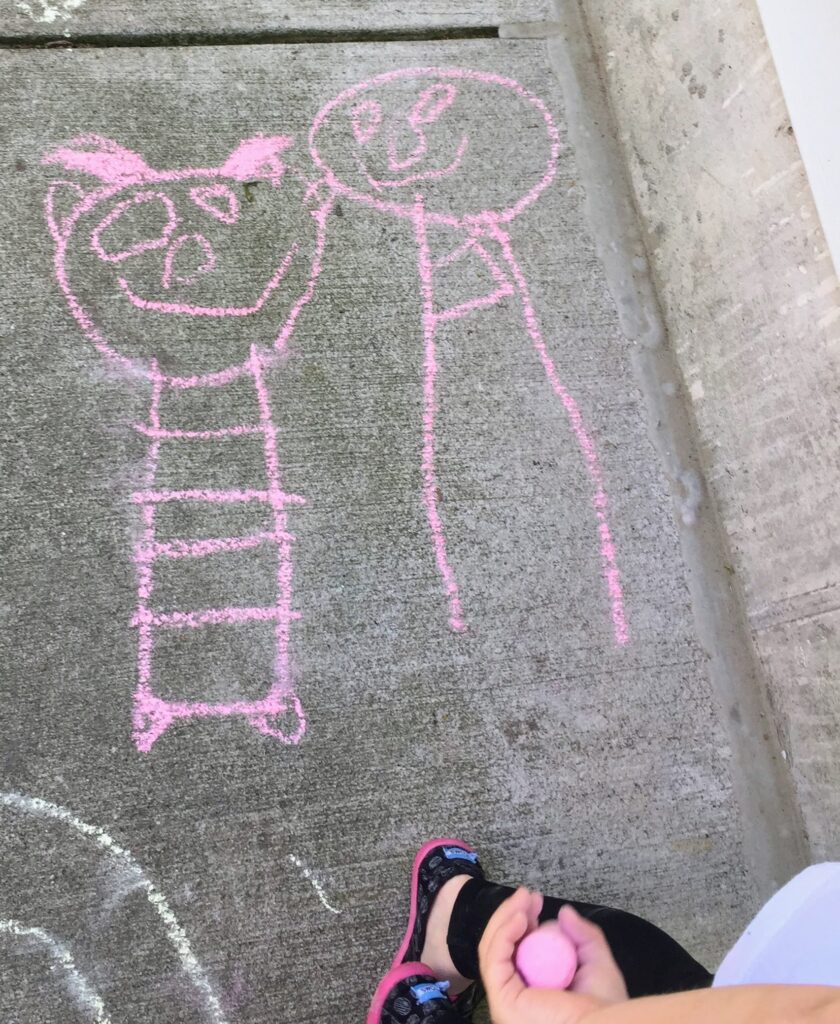Geometry with Chalk Mosaics

“Oh, I like your mosaic, Avery!” says Claire, who has wandered over to look at the mosaic that Avery has just created with sidewalk chalk and tape. “Yours only had triangles. We did squares and triangles and those long skinny squares.”
“Oh, you mean rectangles! I want to see it!” Avery exclaims. He jumps up to compare their creations.
Our days have been full of busy children drawing shapes and creating colorful chalk mosaics on the sidewalk. This activity offers many opportunities to work on shape recognition while extending the learning to the outdoor classroom.

Start by creating a shape on the sidewalk or a flat surface with masking tape. Divide the inside area into smaller shapes. If this is your first attempt at introducing chalk mosaics to your students, I would suggest beginning with a few small areas that measure about two feet by three feet, with smaller shapes inside.
Why start out small? The children can see results faster—and smaller is better for our youngest students, who haven’t yet developed the hand and wrist strength to color in larger shapes. On a more practical note, I’ve discovered that smaller shapes are better when the children are using smaller pieces of chalk.
You can always go bigger as the children get the hang of chalk mosaics. If you have an endless supply of wasabi tape, this easy-to-tear tape enables them to create their own shapes inside the larger shape.
Leaving a basket of chalk nearby will invite the children to start coloring in the shapes. Once the children have completed the mosaic, simply remove the tape and admire the masterpiece!

As your students learn to identify shapes, they can use spatial orientation vocabulary to describe the relative positions of the shapes. Preschoolers should understand and be able to use positional words such as above, below, beside, in front of, behind, next to, between, on, over, under and inside.
Shapes are the foundation of geometry. Geometry involves shape, size, position, direction and movement.
In early education, geometric skills include identifying and comparing shapes, differentiating between shapes and creating shapes.
Children need hands-on investigation to understand more than just naming or classifying shapes. Our chalk mosaics introduce children to simple shapes—as well as more advanced concepts such as symmetry, angles and fractions.

“My chalk is shrinking really fast!” giggles Rowan.
Oh, how I love shrinking chalk! Yes, we are definitely collecting data, making observations and noticing cause and effect.
But there’s more happening here than meets the eye. We know that the transition to smaller writing utensils helps promote the development of better gripping skills. As the children continue to draw and their pieces of sidewalk chalk get shorter and smaller, they are effectively transitioning to smaller writing tools and increasing their grip strength.
We try not to rush writing in our young learners. But when it happens spontaneously, we try to promote the use of smaller pieces of chalk, crayons or pencils to help them develop age-appropriate gripping skills.
These are all bonuses for kindergarten readiness—above and beyond the early math learning standards. This is the foundation that we talk about when we play our way into academic life. These small steps will enable our children to succeed when it’s time to sit at a desk.
I have a few insights into the hidden benefits of chalk play—insights that can be shared with parents who may question the value of outdoor play and its role in advancing their children’s kindergarten readiness. Kindergarten, sadly, involves a lot of sitting time. Children need strength throughout their bodies—including strong core muscles to sit all day. When children get down on their hands and knees and support their upper-body weight with their arms and hands, this strengthens their core muscles, as well as their shoulder muscles, which are so important for fine motor dexterity.

There’s a lot of math built into our chalk play. Follow the lead of your students, connect the curriculum to the play and you’ll meet your learning standards every day!
Looking for more ways to play with shapes? Extend the learning with these Early Math Counts shape lesson plans!
There are patterns that are on the sidewalk. As they have shapes with duct tape, the children can color inside the boxes to make it colorful.
Great activity!
This is a great outdoor activity. One of my classes really enjoyed and another not so much. The second class took a little longer to enjoy it. this came after being able to name the shapes.
Nice observations, new ideas!
I like this Activity for many reasons. These are material that are very familiar to the children, can teach them that shapes are usually represented in certain colors. Hits many of the math proccesses.
They are making connections, estimating, problem soloving, reasoning and visualizing.
So since its too cold outside, the kids enjoy the blocks and tiles inside. I’ll expand on this activity so it can be more enjoyable